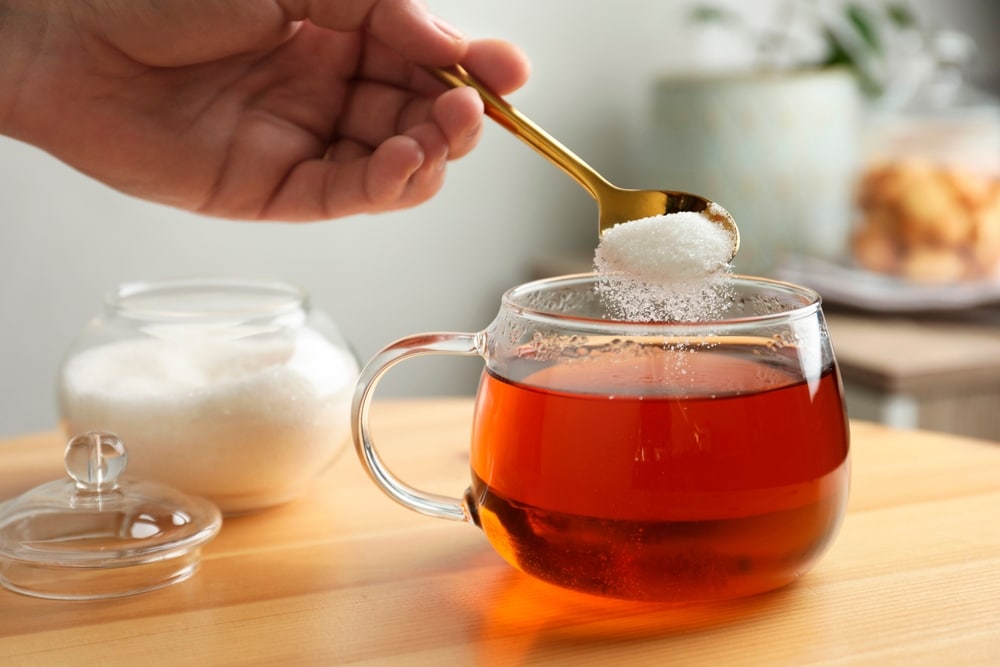The global conversation around sugar is evolving fast — from calorie counts to cardiovascular risk. As the health risks of added sugar become harder to ignore, consumers are turning toward alternatives like honey, monk fruit, and stevia, hoping for a safer sweet fix. But as the line blurs between “natural” and “healthy,” science is stepping in to sort fact from marketing.
Over the last decade, researchers have built a clear case against excess sugar consumption. A 15-year cohort study in JAMA Internal Medicine linked high added sugar intake to a sharply increased risk of death from cardiovascular disease. Meanwhile, new research from The BMJ suggests that sugar exposure in early life could set the stage for heart conditions decades later — even if diet improves in adulthood.
The FDA now mandates that added sugars be disclosed separately on nutrition labels, and recommends adults limit consumption to no more than 50 grams per day — roughly 12 teaspoons. But as the definition of “added” expands to include everything from honey to fruit juice concentrate, consumers face a new challenge: which sweeteners truly minimize risk?
Added Sugar: A Clear Link to Heart Disease
Refined white sugar, or sucrose, is energy-dense and nutrient-empty. According to USDA FoodData Central, 100 grams of sugar delivers 387 calories, entirely from carbohydrates. It lacks fiber, protein, vitamins, and minerals — and it spikes blood glucose rapidly, with a glycemic index between 65 and 70.

That blood sugar surge is more than just a metabolic inconvenience. The JAMA study followed more than 11,000 adults over 15 years and found that those who consumed 17% to 21% of their calories from added sugar had a 38% higher risk of cardiovascular mortality compared to those who consumed less than 8%. At intakes above 25%, the risk more than doubled.
Even after adjusting for BMI, smoking, physical activity, and other dietary variables, the link remained strong. The findings underscore one message: more added sugar, more risk.
How Do Monk Fruit and Stevia Compare?
As traditional sugars fall out of favor, zero-calorie sweeteners like monk fruit and stevia have emerged as popular substitutes. Both are plant-based, non-nutritive, and FDA-approved for general use. They offer intense sweetness — monk fruit is around 250–300 times sweeter than sugar — but without the caloric load or glycemic response.

In a report made by The Times of India, Oxford-certified nutritionist Suman Agarwal emphasized their advantages: “These are safe alternatives that don’t raise blood sugar, unlike traditional or even natural sugars.”
Still, some researchers caution that sweetness itself can be habit-forming. Overreliance on low-calorie sweeteners may reinforce sugar cravings, altering appetite regulation even in the absence of calories — an area of ongoing study.
Not All Natural Sugars Are Created Equal
Natural sweeteners like honey, dates, and jaggery often carry a health halo. They’re minimally processed and contain trace amounts of antioxidants, iron, or potassium. But nutritionally, the differences may be less meaningful than advertised.
According to Agarwal, 100 grams of jaggery delivers around 380 calories — just shy of sugar — and may have a glycemic index as high as 84, depending on the source. Honey, while lower on the glycemic index (between 45 and 69), still contains 304 to 330 calories per 100 grams. It may be easier on blood sugar, but it remains a concentrated source of added sugar in any diet.
“The bottom line is that all added sugars, even the so-called healthier ones, should be used sparingly,” Agarwal says.
A Rare Natural Experiment Links Early Sugar Exposure to Adult Heart Risk
A large-scale study published in The BMJ offers compelling new evidence on sugar’s long-term health impact. Researchers used the UK Biobank to study over 63,000 adults born around the time of Britain’s post-WWII sugar rationing.
Those exposed to lower sugar intake in early life — particularly during the first 1,000 days from conception — had meaningfully lower cardiovascular risk in adulthood:
20% lower risk of overall cardiovascular disease
25% lower risk of heart attack
27% lower risk of dying from heart-related causes
The effects persisted after controlling for genetic, social, and lifestyle factors. According to the authors, the results suggest that early-life nutrition may influence how the body metabolizes sugar decades later, potentially through lasting effects on insulin sensitivity and lipid metabolism.
The Verdict: Less Sugar, Smarter Choices
While monk fruit and stevia are the lowest-risk options for most people — especially those managing diabetes or metabolic syndrome — they’re not a free pass. Experts agree that the ultimate goal should be reducing overall sweetness, not simply replacing sugar with a different label.
Global health agencies are in alignment. The World Health Organization advises keeping free sugar intake below 10% of daily energy, and ideally under 5% — about 25 grams or 6 teaspoons per day. That includes all forms of added sugar, whether from soda, cereal, or a spoonful of honey.
The broader message is clear:
Refined sugar offers no nutritional upside and poses clear risks
Honey and jaggery have limited benefits and should still be used sparingly
Monk fruit and stevia are safer, but best used to curb overall sweetness
The science doesn’t demand sugar abstinence. But it does demand awareness, and a willingness to rethink what sweet should mean in a modern diet. In an era of escalating heart disease and metabolic illness, cutting back may be the single most effective dietary change an individual can make — at any age.

